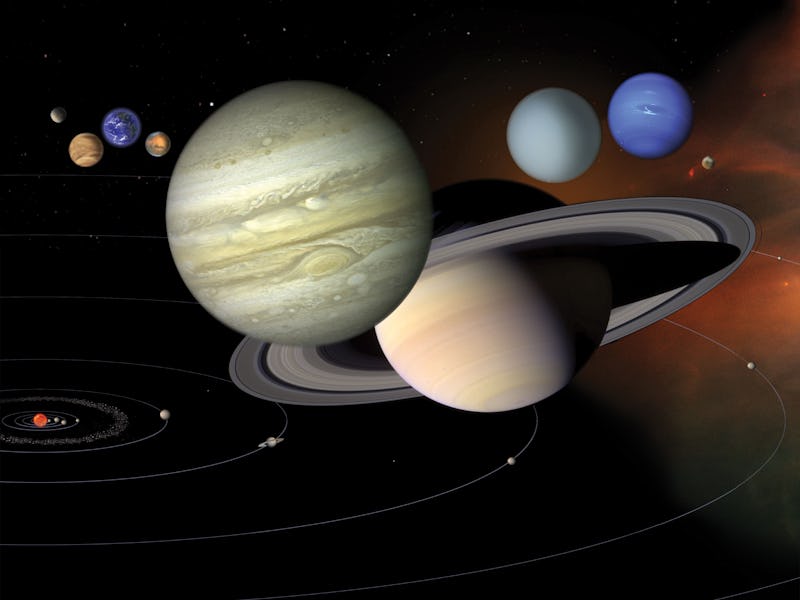The best time to see Mercury, Venus, Mars, Jupiter, and Saturn in the June night sky
Catching all of the planets is a chance that only comes every few years.

Sometimes, the Universe offers up an illustration of a ready-made science lesson. Just such an alignment occurs this month, as all of the naked eye planets are in order, from innermost Mercury to outermost Saturn. June 2022 offers early risers the chance to trace out the naked eye planets, from Mercury to Saturn.
Sure, you have to awaken early (it is northern hemisphere summer, after all), but the view is worth it. And unlike many Astro-events, this one requires no special equipment or gear to witness, just a good (to quote Commander Adama from Battlestar Galactica) working set of “Mark-I eyeballs.”
This is not true conjunction or alignment: the worlds of Mercury, Venus, Mars, Jupiter, and Saturn are simply laid out before our fair world in the dawn. This was the sky of the ancients, a gathering of ‘wandering stars’ represented by the planets known since antiquity.
The orderly scene was made complete once bashful Mercury appeared low in the dawn sky in late May, and Mars swapped places with Jupiter after close conjunction on May 29.
When to see Mercury, Venus, and Mars
Venus, the Moon, and Jupiter.
Dawn offers one of the finest astronomical views for 2022.
The planets are at their closest span (just over 90 degrees) on the morning of Saturday, June 4. The orderly row of planets is like something out of an elementary astronomy textbook minus our slot for the Earth between Venus and Mars. The sequence isn’t broken until early July when Mercury departs the scene.
If you’ve never caught fleeting Mercury, now is a good time to cross the timid planet off of your astronomical “life list.” Mercury reaches its greatest elongation 23 degrees west of the Sun on June 16, 2022.
Of course, catching all of the naked planets about the horizon at once isn’t super-rare but happens once every few years. This is mainly a function of the two slowest worlds, Jupiter overtaking Saturn, which occurs about once every 20 years in their respective orbits. We had just such an event on December 21, 2020, with the ultra-close (6.1’) pass of the two gas giant worlds. This helped set us up for this summer’s dawn layout. Connect the dots of the planets, and you can nearly trace out the ecliptic plane, the flat sheet of Earth’s path around the Sun.
How to see the Moon and Saturn this month
Saturn in all its glory.
The Moon joins the scene and begins its planetary tour with a 4-degree pass near Saturn on the morning of June 18, 2022. The waning crescent Moon gets even closer to the dawn planets in the proceeding days, actually occulting (passing in front of) Mars for the South Pacific on June 22 and Uranus for Indonesia and Australia on June 24.
The Moon’s June 26 passage 2.6 degrees from Venus also offers up a good guidepost to see Venus in the daytime with the naked eye, using the nearby Moon as a guide.
Mark calendars: 2040
Don’t forget the Moon!
The close conjunction of Jupiter and Venus in 2013 almost sparked conflict between India and China when the pair was briefly suspected to be military spy drones. Remember, astronomy and knowledge of the sky and planets can indeed save lives.
Looking ahead in the 21st century, we see grand planetary groupings that are closer still. Mark your calendars for the evening of September 8, 2040, when all of the naked eye planets (plus the Moon!) will sit just under 10 degrees apart (!) at dusk.
Something to look forward to, for sure. In the meantime, be sure to check out the fine line-up of planets at dawn for an open sky classroom view of the solar system.
This article was originally published on Universe Today by David Dickinson. Read the original article here.